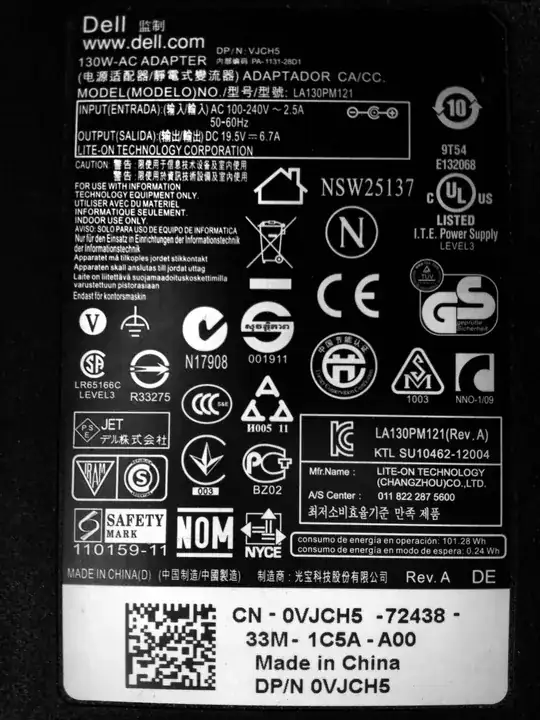Software interface to Power Supply
As mentioned in the top voted answer a special communication channel to the Power Supply is required. On my laptop there is a USB 3 self powered hub connected to the UPS (Interruptible Power Supply). Although you don't have this type of power supply the communication concept would be similar:
$ sudo pwrstat -status
The UPS information shows as following:
Properties:
Model Name................... CP550HGa
Firmware Number.............. BFBB104#BI1.g
Rating Voltage............... 120 V
Rating Power................. 330 Watt
Current UPS status:
State........................ Normal
Power Supply by.............. Utility Power
Utility Voltage.............. 121 V
Output Voltage............... 121 V
Battery Capacity............. 100 %
Remaining Runtime............ 33 min.
Load......................... 72 Watt(22 %)
Test Result.................. Unknown
Last Power Event............. None
The current load is 72 Watts and the maximum load is 330 watts.
Installing pwrstat
To install pwrstat go to the Cyber Power Systems website Linux Software page. You will find 32-bit and 64-bit downloads available for all Linux distro's but make sure you select the one for Debian (.deb) which Ubuntu is based on.
After downloading install it using:
sudo dpkg -i powerpanel_132_amd64.deb
To learn more about using pwrstat use:
man pwrstat # to learn more about the terminal interface
man pwrstatd # to learn about background daemon with alarms, auto shutdown, etc.
What to do when there is no software
The old tried and true method is to look at the safety label on your power supply. By law in most countries this label must exist. For my old laptop it is as easy as looking at the power brick. For your desktop PC it may be on the back or you might have to open it up and look inside:

The label shows:
- Output 130 Watts (Watt=Volt x Amp)
- Input 100-240 VAC ~ 2.5 Amps, 50-60 HZ
- Output 19.5 Volts ~ 6.7 Amps
What to do when you can't look at the hardware
You could get someone who is on site to take the picture for you. If that isn't viable get the make and model of the computer and google the power supply specs. From this article the generic specs for PCs are:
- Small Form Factor - 15A (250W)
- Mini-Tower - 25A (300-350W)
- Mid-Tower - 35A (400-500W)
- Full Tower - 40A (600-650W)
- Dual Video Card (SLI) - 50A (750W+)
Note the amperage is specified for 12 Volt rail output. So 15A = 180 watts and 50A (For dual video cards) = 600 watts. Wattage = Amperage * Voltage.

